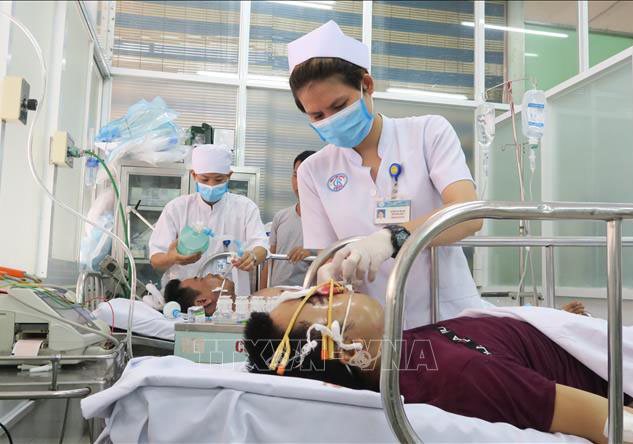HCMC – The World Health Organization ranks Vietnam 160th in terms of overall health system performance. It is not a destination for medical tourism. All the same, I recently got cataract surgery at Cho Ray Hospital (201B Nguyen Chi Thanh Street), the largest and best-known of HCMC’s many hospitals. The price was right and I was satisfied with the result. But I cannot recommend the experience to others.
Cho Ray was built with Japanese aid money in 1974. The architecture is in the same “decade that taste forgot” style as Doc Lap Palace. The hospital is often in the news. It proudly cured a Covid-19 patient from China in February.
The hospital has an international office to deal with foreigners. But the vast majority of the people who work there cannot speak English. Although almost all of the patients in this section are English speaking, I still had to wait for the staff to find someone who could talk to me.
A cataract causes the lens to cloud up until you can’t see out of one eye. The surgeon removes the natural lens and replaces it with a plastics lens. It is one of the most common surgical procedures. Vietnam’s high level of ultraviolet light makes it even more common. On my way to the operating room, I met four or five patients coming out with bandages over one eye. Cho Ray is clearly a hospital with plenty of experience dealing with cataract patients such as myself.
I was impressed with the professionalism of the doctor assigned to me, although he spoke no English at all. He tried to explain things to me in Vietnamese several times. I gather he expected me to make a choice of some kind.
The nurses were less professional than the doctor. They giggled for their favorite doctors. One was assigned to give my eye an ultrasound treatment to soften up the cataract in advance of the operation. She never got off her telephone during the procedure. It seems that that approach doesn’t work. When I came back the next day, the doctor came and redid the procedure.
The scary part was the operation itself. There are cataract surgery videos on Youtube. They are not easy to watch. In my case, there were five or six people close together in the operating room. You don’t think of eye surgery as being funny, but they never stopped laughing. Perhaps a little eye doctor humor was being exchanged: “There’s a web page for people with chronic eye pain.” “I know, it’s a site for sore eyes.” Ha! Ha!
I’m just glad that I didn’t get the joke or my head might have jerked while the doctor was vacuuming the cataract out of my eye.
I can report that my recovery went extremely well. Within a day, the redness was gone from the eye. When I took bandages off, I noticed that I was now farsighted in the eye that was operated on. I am still nearsighted in the other eye. At that point, it hit me that the doctor had wanted me to choose what kind of lens I wanted. As with glasses, there are single focus lenses and bifocal lenses.
I now use both eyes for distance viewing and my right for reading. Before the cataract, my near-sighted right eye did most of the work while my left eye was recessive.
If you’d rather skip the Vietnam medicine experience, HCMC has two internationally accredited hospitals. Vinmec Central Park International Hospital (208 Nguyen Huu Canh Street, Binh Thanh District) was accredited by the Joint Commission in 2015 while FV (France-Vietnam) Hospital (No. 6 Nguyen Luong Bang Street, District 7) was accredited in 2016.
The city’s other international hospitals include City International (No. 3, 17A Street Binh Tan District), Hanh Phuc International (No. 97 Nguyen Thi Minh Khai Street, District 1), and Columbia Asia International (No. 8 Alexandre de Rhodes Street, District 1).











